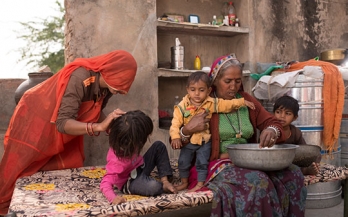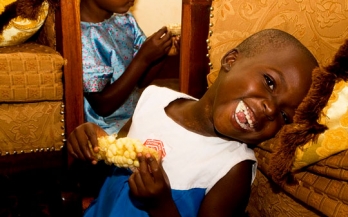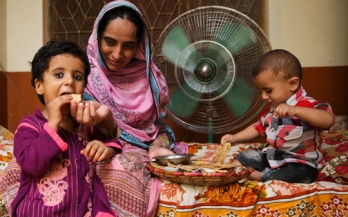This report reviews laws and policies covering the fortification of wheat flour in the Central Asian Republics of Kazakhstan, Kyrgyzstan, Tajikistan and Uzbekistan as well as Afghanistan and Pakistan, and also the fortification of edible oil in the latter two countries.
AP Foods’ approach to supplementary food production is a strong example of how GAIN’s nutrition partners learn from and use business-centered practices to achieve improved quality and efficiency within public sector or non-profit organisational contexts.
Dietary assessment data are essential for designing, implementing and evaluating food fortification and other food‐based nutrition programs. This paper strives to fill this gap in the literature while providing practical guidance to inform programming decisions.
This assessment of the wheat flour milling industry in Tajikistan looks at the current picture of the flour produced and sold in the country and the existing fortification provisions, identifies gaps and challenges in the milling industry in relation to future fortification efforts, and presents recommendations to enact and implement legislation to enhance flour fortification and therefore the nutritional standards of the population.
The purpose of this study was to examine the potential of Maisoyforte 6-24, a new fortified, non-instant cereal for infants and young children (IYC), which was proposed by a local Ghanaian company to the Global Alliance for Improved Nutrition (GAIN) for start-up support.
Although Bangladesh has made important progress over the last two decades in the area of undernutrition, micronutrient malnutrition still poses a significant public health threat. To increase coverage in hard to reach areas and provide a more regularised supply of vitamin A to the general population, the Government of Bangladesh endorsed a national programme to fortify edible oil with vitamin A.
This program, launched in Afghanistan, aims to increase the availability and access to fortified wheat flour, fortified edible oil and iodised salt by strengthening the regulations and enforcement environment for fortified foods as well as to initiate monitoring of these products at the consumption level.
In the Philippines, the prevalence of undernutrition and micronutrient deficiency remained high period of three years. The objectives of this survey were to describe the current infant and child feeding practices and identify major individual, family and community factors that contribute to current breastfeeding practices, as well as to determine growth/nutritional and micronutrient status.
Micronutrient deficiencies, especially iron deficiency anaemia, are a public health problem in Egypt, where the prevalence of anaemia reaches about 40%. As a baseline for the fortification project, a field survey was conducted with the objective of assessing iron deficiency anaemia status, and dietary iron and bread consumption among the Egyptian population.
The department of Paediatrics and Child Health, Aga Khan University conducted the Pakistan National Nutrition Survey in 2011 to assess the population nutritional status, particularly among women and children using standard international parameters and indicators. This survey report describes the results of these additional analyses.










